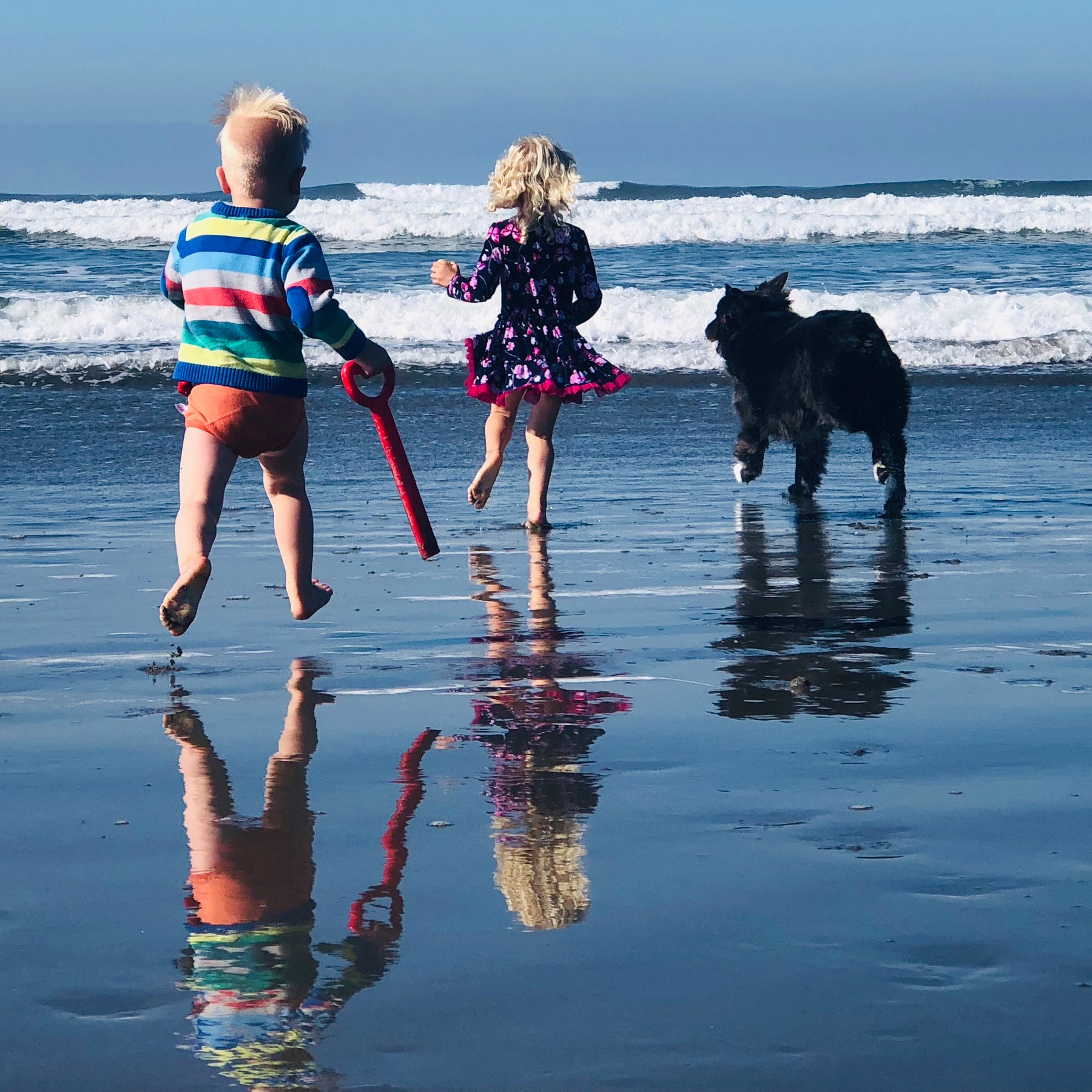
Should Children Apologize to Dogs?
Recently, my 3-year-old son was being his usual, boisterous self, when Sunny, our 11-year-old dog, bumped into to his Lego creation causing a small portion of it to plunge to its death. As you might imagine, this led to catastrophe. There was little time or space to intervene before my son hit Sunny with the remaining part of his creation.
Thankfully, Sunny is forgiving and tolerant of the unpredictable behavior toddlers and young children often exhibit, as my son is not his first rodeo. He also has a very active 6-year-old sister who now asks a lot of questions and enjoys joining in on training sessions.
Teaching children to respect dogs is a responsibility I do not take lightly. In fact, I teach Be a Tree which is a bite prevention program that promotes safe interactions between children and dogs. I also create awareness through educational infographics depicting what tense vs. relaxed dogs look like while interacting with children. Unfortunately, my son does not yet have the skills necessary to always control himself. Disruptive behavior begins to decrease as kids age and hit milestones in how they learn, speak, behave, play, and move, according to the CDC.
As dog professionals, we stress FULL and ACTIVE supervision, but unfortunately, things can happen quickly and unexpectedly and sometimes our children are just not developmentally capable of doing the “right” thing. I’m not writing this to talk about parental supervision, though it is imperative we never leave a child and a dog alone, even then things can go wrong, as evidenced in this story. I am writing because of what happened next.
My husband, Dog love him, immediately got down to our son’s level and began talking with him about how we practice kindness and do not hit, then asked him to apologize to Sunny. I quickly intervened this time and explained to my husband that because Sunny was already stressed, giving him space was the best apology. He replied with, “Sorry, I wasn’t thinking about Sunny. I was thinking about the lesson I wanted to teach our son.”
But really, how do we teach our children who haven’t reached these developmental milestones to fully understand the difference of empathy and apology with our dogs? I don’t have the right answer to this, as I am no parenting expert, but I presume this is a common sentiment and quandary for many parents of young children who are still learning to navigate their ever-changing external and internal worlds. I believe that our responsibility to our children is to teach them two separate, consistent lessons:
- How we treat and behave around humans.
- How we treat and behave around dogs.
I am writing to teach you how to recognize and understand what your dog needs. And to understand that sometimes those needs are different than the lessons we are trying to teach our children.
You may be thinking this will confuse your child about apologies but without respecting our dogs for the species they are, we put our children and our dogs in danger. We create a world where dogs have no choice — where dogs have no voice — where there is no option for them to retreat to a safe place — where humans put human needs before the dog’s.
This is where the danger lies. When our dogs feel threatened or scared and have no choice to remove themselves from the “scary situation,” they communicate through their body language. Their discomfort might be displayed by:
- turning or walking away
- lip licking
- yawning
- showing “whale eye” (where the whites of the eye are visible)
- tension in the face or mouth
- furrowed brow
- ears flat or pinned back
- a lifted paw
- making body small
- body freezing
- showing “red rocket” or “lipstick” (where the penis protrudes from the preputial sheath)
If this body language is overlooked or ignored, the dog may resort to something more obvious, such as:
- growling
- air snapping
- lunging
- biting
Current bite statistics tell us that children are more likely to be bitten than adults. This is a statistic we must take seriously.
Modeling appropriate behavior for our children and teaching them how our dogs communicate is an important lesson in respect. If we begin teaching our children as young as possible how to read and understand dog body language, it will become a second language to them. That is what our dogs deserve. They deserve a world where people listen and respect them for the individuals and species they are.
Please visit our Educational Content for FREE downloadable infographics!
Other valuable resources:
Kids and Dogs: How Kids Should and Should Not Interact with Dogs from Dr. Sophia Yin, including a FREE downloadable poster!
Dog Bite Prevention Information for Parents from our friends at Doggone Safe
Teaching Children How to Prevent Dog Bites from the American Veterinary Medical Association
Dog Safety Video from The Family Dog
Preventing Dog Bites from the Centers for Disease Control and Prevention

Comments
Leave a comment